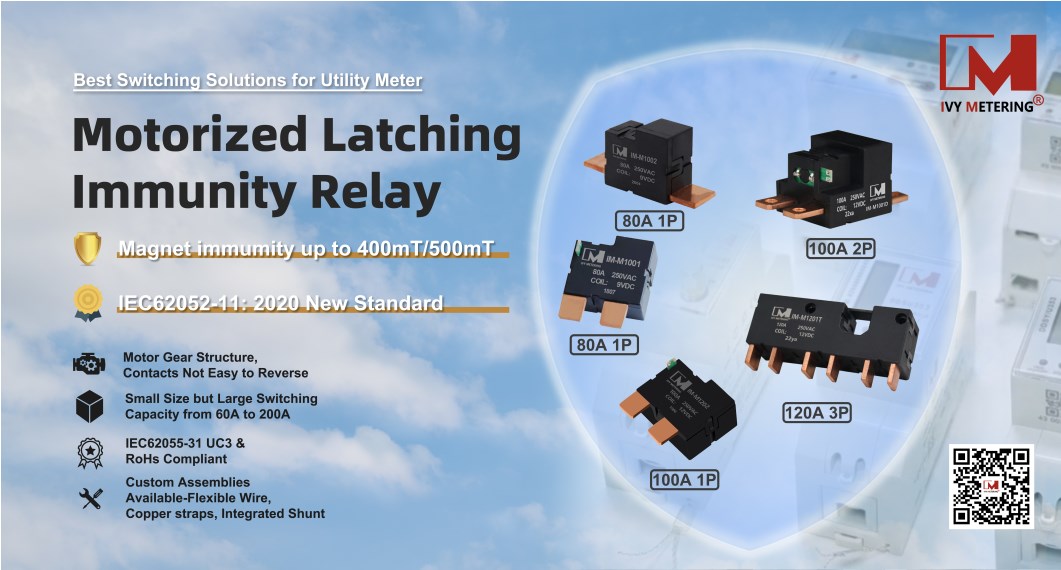What is unique about IVY motor latching relays?
The relay industry has a long history of development, and various types of relays have been derived in the process. Among them, the holding relay can be said to be unique in the application of circuits with infrequent switching due to its self-holding and low energy consumption. It is widely used in prepaid electric meters, electric vehicle charging piles, and street light control systems.
At present, the latching relay mainly adopts magnetic latching and mechanical locking devices. In recent years, the motor-type latching relay has overcome many shortcomings of the holding relay and has begun to enter the market as a new force of latching relays. When there is external force vibration, the magnetic latching relay may have state switching problems. At the same time, due to insufficient contact pressure, slight size changes may also cause changes in contact state or pressure. In addition, the magnetic latching relay will not work properly when disturbed by an external magnetic field. Mechanical latching relays have complex structures, difficult assembly, and problems such as inability to achieve normal switching when affected by external magnetic field interference, and have been gradually eliminated from the relay market. Traditional motor-type latching relays have a series of problems, such as large size, high cost, short mechanical life, and long action time. It is rare to achieve normal switching through a simple structure.

The small motor latching relay mentioned this time has a gear structure and a different transmission method. In terms of structure, it can be realized with very little copper material, which greatly saves the use of copper materials and saves costs. At the same time, the structural characteristics make the contact pressure very high, there is no secondary repetition, and the contact will not shake due to the electromagnetic induction force of the current. It can realize automatic assembly and automatic testing, greatly improving the use efficiency. In addition, the stroke design method can achieve the consistency of the quality of the motor latching relay. The iron shielding shell of the motor greatly improves the relay's ability to resist magnetic fields, and it can generally work normally in a magnetic field environment of 400mT. Reasonable transmission design and motor matching design make the relay's opening and closing time only tens of seconds.
As a new force in latching relays, I believe that the motor latching relay will be developed and applied in many industries in the future with its outstanding highlights, and the majority of relay industry demanders will also take a fancy to its characteristics and advantages, and apply them in their project equipment. If you want to know more about motor latching relays, please leave a message online or call us for consultation!












